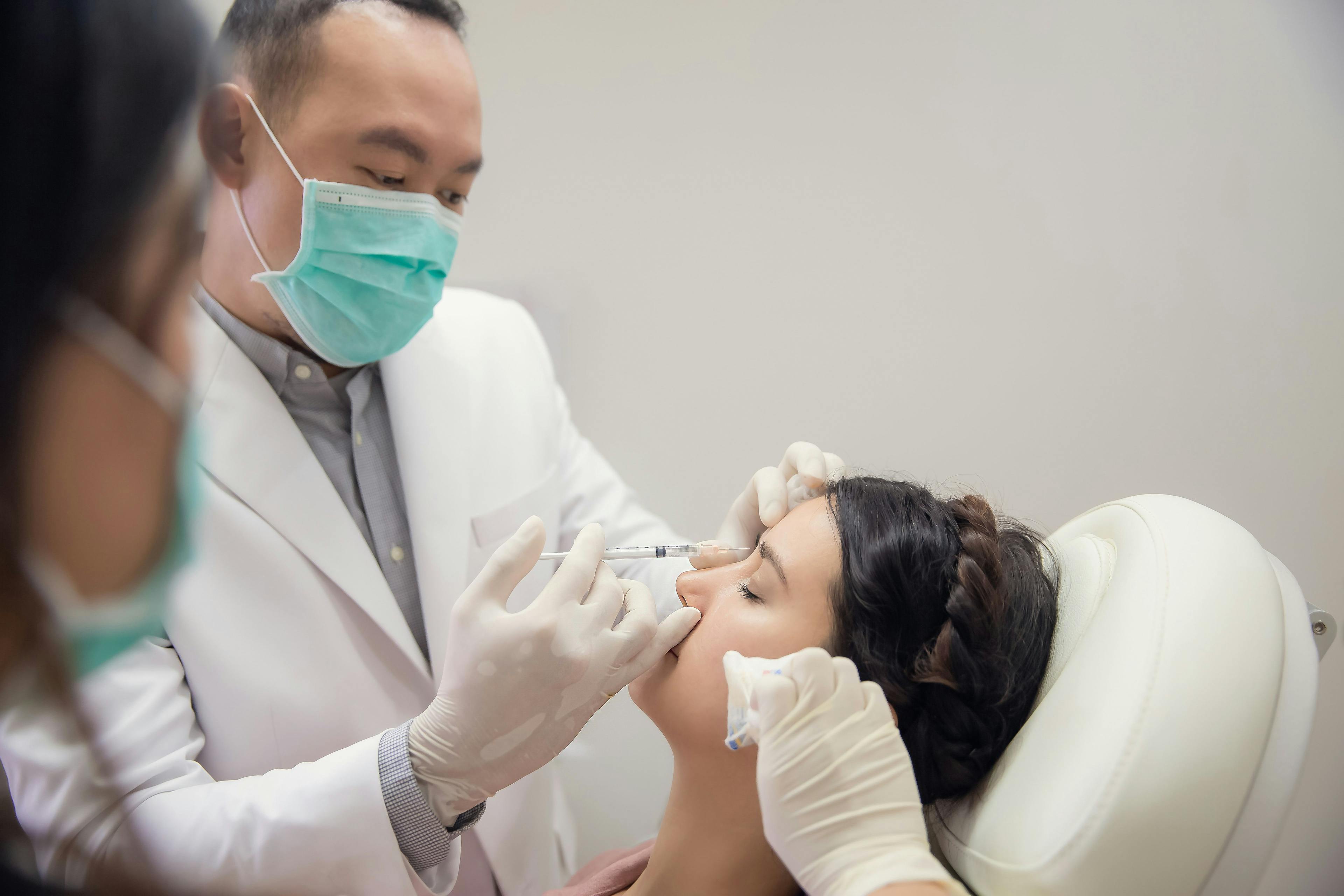- Acne
- Actinic Keratosis
- Aesthetics
- Alopecia
- Atopic Dermatitis
- Buy-and-Bill
- COVID-19
- Case-Based Roundtable
- Chronic Hand Eczema
- Chronic Spontaneous Urticaria
- Drug Watch
- Eczema
- General Dermatology
- Hidradenitis Suppurativa
- Melasma
- NP and PA
- Pediatric Dermatology
- Pigmentary Disorders
- Practice Management
- Precision Medicine and Biologics
- Prurigo Nodularis
- Psoriasis
- Psoriatic Arthritis
- Rare Disease
- Rosacea
- Skin Cancer
- Vitiligo
- Wound Care
Publication
Article
Dermatology Times
Treating Palmoplantar Psoriasis With Chemical Peel and Gentian Violet
Author(s):
Even with patient hesitancy, treating PPP with gentian violet and chemical peels could help patients avoid biologics.
A case study of a patient with palmoplantar psoriasis (PPP) who was successfully treated with a combination of 40% trichloroacetic acid (TCA) peels and 1% gentian violet was published in JAAD Case Reports.1
“One of the truly interesting things that has been discovered recently is that the skin is normally acidic, and when there is inflammation the skin becomes more alkaline,” said senior author Jack Arbiser, MD, PhD, a professor of dermatology at Emory University School of Medicine in Atlanta, Georgia. “TCA restores acidity to the skin.”
Gentian violet, on the other hand, has additional anti-inflammatory properties for blocking angiogenesis.
Over the past 2 years, Arbiser has used the novel PPP treatment on about 2 dozen patients. “Overall, the results have been quite good,” he said. “We are able to keep a lot of these patients off biologics, which is really important during the COVID-19 pandemic.”
Arbiser selected a 70-year-old African American woman for the case study because he had the most complete set of before-and-after pictures of her.
The patient had a history of type 2 diabetes and a 10-year history of a pruritic rash of her hands. On exam, scaly, ill-defined erythematous plaques on the soles and palms were observed.
Although the patient declined biopsy of the palms or soles, PPP was deemed the most likely diagnosis.
With no improvement using ointments and lotions after 4 months, combination TCA and gentian violet was started.
“The initial chemical peel is office-based; we do not recommend chemical peeling at home,” Arbiser said. “But the gentian violet can certainly be applied at home.”
The first treatment office visit consisted of TCA followed immediately by gentian violet application.
The purple liquid dye has been used medically for over 100 years, including for many years to treat skin infections because of its antibacterial and antifungal activity. The dye is available without prescription. “You can order it on Amazon,” Arbiser said. “It is quite inexpensive, which is one of the advantages of this treatment.”2
The second office visit, 1 month later, comprised a chemical peel only, as did the third office visit 1 month afterward.
Between visits, the patient was instructed to apply gentian violet once a day for 1 or 2 weeks.
The patient noted a significant and sustained improvement of the scale, itch, and erythema of her palms and soles at the second and third visits.
Arbiser was quite surprised how well the patient fared. “I was hoping to avoid a systemic agent,” he said. “Our therapy was a last-ditch attempt before resorting to more aggressive therapies.”
Still, there is patient hesitancy about the novel therapy.3 “The concept of actually putting acid on inflamed skin is initially counterintuitive,” Arbiser said. “Most people feel that would be really painful. But in reality the acid is not painful at all.”
The Koebner phenomenon is also avoided. “TCA does not spread the inflammation, unlike a patient who has psoriasis and develops a wound,” Arbiser said. “That patient often develops psoriasis in the wound. We have not seen the chemical peel cause Koebnerization.”
Staining is the major barrier to patient adherence. “Staining is definitely an inconvenience, but you are avoiding a biologic or other systemic agents that can make you immunocompromised and may cause cancer,” Arbiser said. “The $64 billion question is that once you start a biologic or other systemic treatment, you often do not know when to stop. So we are treating a lot of patients unnecessarily because we have no way of knowing who we can safely stop treating and who we cannot.”
Similarly, the likely biggest downside of the unique therapy is that it can stain clothing, for which patients are warned. Patients are also advised to use Grandma’s Secret Spot Remover to eliminate stains.
Within the last few years, Canada withdrew gentian violet from the market. “I feel they made a big mistake,” Arbiser said. “Their decision was based on very large doses of the dye given to mice and rats, which caused some tumors. But in humans, we have not seen cancer. Canada unfortunately prioritized animal data over human data.”4
Arbiser believes TCA and gentian violet is an extremely safe and effective method to treat the very difficult-to-treat disease of PPP. However, there is no CPT medical code. “I think in the future it should be billed as a new procedure,” he said.
Often, Arbiser said, a clinician is limited to choosing 2 out of 3 therapy outcomes: safe, effective, and inexpensive. “But this novel treatment gives you 3 out of 3,” he said.
Arbiser has also used the combination therapy for atopic dermatitis of the hands and feet with similar results.
Disclosure:
Arbiser reports no relevant financial disclosures.
References:
1. Bubley JA, Alharthi M, Arbiser JL. Successful treatment of palmoplantar psoriasis with chemical peeling and gentian violet. JAAD Case Rep. Published online August 24, 2021. doi:10.1016/j.jdcr.2021.08.017
2. Maley AM, Arbiser JL. Gentian violet: a 19th century drug re-emerges in the 21st century. Exp Dermatol. 2013;22(12):775-780. doi:10.1111/exd.12257
3. Arbiser JL. Gentian violet is safe. J Am Acad Dermatol. 2009;61(2):359. doi:10.1016/j.jaad.2009.03.029
4. Rao S, Morris R, Rice ZP, Arbiser JL. Regression of diffuse B-cell lymphoma of the leg with intralesional gentian violet. Exp Dermatol. 2018;27(1):93-95. doi:10.1111/exd/13418

Newsletter
Like what you’re reading? Subscribe to Dermatology Times for weekly updates on therapies, innovations, and real-world practice tips.




















